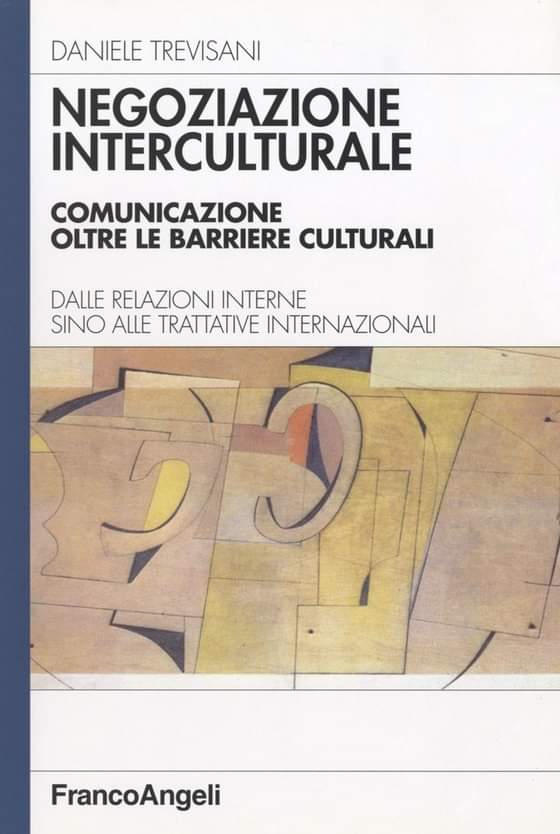© Articolo estratto dal libro di Daniele Trevisani “Strategic selling. Psicologia e comunicazione per la vendita consulenziale e le negoziazioni complesse”. Franco Angeli editore, Milano. Pubblicato con il permesso dell’autore.
I livelli delle domande: domande interiori e domande esterne
La fase di analisi ed ascolto richiede il ricorso a:
- domande aperte,
- domande chiuse,
- domande di precisazione,
- riformulazioni e verifiche di comprensione,
- riepiloghi, sommari,
- rispecchiamento dei contenuti.
Le domande devono essere poste solo dopo che si sia creato lo spazio psicologico per farle, chiedendo il permesso al cliente di porgli alcune domande che servono per poter realizzare proposte sensate.
Durante la fase di analisi è essenziale il ricorso alla carta e penna per prendere appunti, sotto forma di parole chiave, ed un precedente allentamento alle tecniche di memorizzazione, intervista e Analisi della Conversazione (Conversation Analysis, CA).
Tutti noi abbiamo curiosità e dubbi, che però raramente esprimiamo.
A volte non lo facciamo per pudore (quante volte fai sesso in un mese? = invasione dello spazio psicologico altrui), altre volte per titubanza strategica (vorrei chiedergli quanto sono disposti a pagare ma non lo faccio per timore che mi dicano una bugia sulla quale poi non saprei come argomentare), e per tante altre ragioni.
Un’operazione fondamentale è distinguere tra:
- domanda interiore: la domanda reale che ci stiamo ponendo e a cui vorremmo risposta (es: quanti soldi avete a disposizione?), quello che vorremmo davvero sapere, quello che abbiamo bisogno di sapere, i bisogni informativi di base
- domanda esteriore: la domanda che è adeguata e consentita ad un certo stato di relazione, in base al grado di familiarità con il soggetto, di trasparenza comunicativa, di tempo disponibile (es: avete già fissato un budget per questa iniziativa?), le mosse conversazionali che poniamo in essere, i modi con i quali arriviamo ad ottenere quelle informazioni.
Ogni mancata informazione è un rischio
Ogni volta che il decisore non dispone di informazioni si apre un rischio.
Ogni mancata informazione è un rischio potenziale.
Si richiede pertanto il il ricorso a domande mirate:
domande latenti – fabbisogno informativo – cui è necessario dare risposte e rischi correlati al non sapere le risposte.
Il management scientifico non può permettersi soglie di rischio irragionevoli. Questo non vuol dire chiudersi in una roccaforte, o non accettare una componente di rischio imprenditoriale e di vendita, ma capire in quale terreno ci stiamo muovendo, cioè muoversi con consapevolezza.
Empatia e tecniche di ascolto empatico
L’ascolto è una delle abilità più critiche della negoziazione e della vendita. Lo stereotipo classico del venditore intento a “parlare sull’altro”, a “vincere nella conversazione”, ad avere sempre l’ultima parola, è sbagliato.
L’approccio empatico prevede una concezione opposta: ascoltare in profondità per capire la mappa mentale del nostro interlocutore, il suo sistema di credenze (belief system), e trovare gli spazi psicologici per l’inserimento di una proposta.
Nel metodo ALM distinguiamo alcuni tipi principali di empatia, in base agli angoli di osservazione:
- Empatia comportamentale: capire i comportamenti e le loro cause, capire il perché del comportamento e le catene di comportamenti correlati.
- Empatia emozionale: riuscire a percepire le emozioni vissute dagli altri, capire che emozioni prova il soggetto (quale emozione è in circolo), di quale intensità, quali mix emozionali vive l’interlocutore, come le emozioni si associano a persone, oggetti, fatti, situazioni interne o esterne che l’altro vive.
- Empatia relazionale: capire la mappa delle relazioni del soggetto e le sue valenze affettive, capire con chi il soggetto si rapporta volontariamente o per obbligo, con chi deve rapportarsi per decidere, lavorare o vivere, quale è la sua mappa degli “altri significativi”, dei referenti, degli interlocutori, degli “altri rilevanti” e influenzatori che incidono sulle sue decisioni, con chi va d’accordo e chi no, chi incide sulla sua vita professionale (e in alcuni casi personale).
- Empatia cognitiva (o dei prototipi cognitivi): capire i prototipi cognitivi attivi in un dato momento del tempo, le credenze, i valori, le ideologie, le strutture mentali che il soggetto possiede e a cui si ancora.
Elementi positivi e distruttivi dell’empatia
L’empatia viene distrutta o favorita da specifici comportamenti comunicativi e atteggiamenti.
| Favorisce l’empatia | Distrugge l’empatia |
| Curiosità | Disinteresse |
| Partecipazione reale all’ascolto, non finzione | Fingere un ruolo di ascolto solo per dovere professionale |
| Riformulazione dei contenuti | Giudizio sui contenuti, commenti |
| Pluralità di approcci di domanda (domande aperte, chiuse, di precisazione, di focalizzazione, di generalizzazione) | Monotonia nel tipo di domande |
| Centratura sul vissuto emotivo | Centratura esclusiva sui fatti |
| Segnali non verbali di attenzione | Body Langage che esprime disinteresse o noia |
| Segnali paralinguistici di attenzione, incoraggiamento ad esprimersi, segnali “fàtici” (segnali che esprimono il fatto di essere presenti e attenti) | Scarsa dimostrazione di interesse e attenzione al flusso di pensieroAssenza o scarsità di segnali “fàtici” e di contatto mentale |
La comunicazione d’ascolto e la qualità dell’ascolto, comprendono la necessità di separare nettamente le attività di comprensione (comunicazione in ingresso) dalle attività di espressione diretta (comunicazione in uscita).
Regole per un ascolto di qualità
Durante le fasi di ascolto è necessario:
- non interrompere l’altro;
- non giudicarlo prematuramente;
- non esprimere giudizi che possano bloccare il flusso espressivo altrui;
- non distrarsi, non pensare ad altro, non fare altre attività mentre si ascolta (tranne prendere eventuali appunti), usare il pensiero per ascoltare, non vagare;
- non correggere l’altro mentre afferma, anche quando non si è d’accordo, rimanere in ascolto;
- non cercare di sopraffarlo;
- non cercare di dominarlo;
- non cercare di insegnargli o impartire verità, trattenere la tentazione di immettersi nel flusso espressivo per correggere qualcosa che non si ritiene corretto;
- non parlare di sè;
- testimoniare interesse e partecipazione attraverso i segnali verbali e il linguaggio del corpo;
Di particolare interesse risultano gli atteggiamenti di:
- interesse genuino e curiosità verso la controparte: il desiderio di conoscere ed esplorare la mente di un’altra persona, attivare la curiosità umana e professionale;
- silenzio interiore: creare uno stato di quiete emozionale (liberarsi da emozioni negative e pregiudizi) per ascoltare l’altro e rispettarne i ritmi.
Differenza tra empatia e simpatia: applicare l’empatia e non la simpatia
Empatia e simpatia non sono sinonimi.
Empatia significa capire (es: capire perché un cliente posticipa un acquisto o vuole un prodotto di basso prezzo, o ci parla di un certo problema).
Simpatia significa invece apprezzare, condividere, essere daccordo.
La vendita richiede l’applicazione dell’empatia e non necessariamente della simpatia.
L’ascolto attivo e l’empatia non vanno confuse con l’accettazione dei contenuti altrui o dei loro valori.
Le regole di ascolto attivo non sono regole di accettazione del contenuto, ma metodi che permettono di far fluire il pensiero altrui più liberamente possibile per ricavarne apertura e informazioni utili.
La fase di giudizio interiore su quanto ascoltiamo, inevitabile durante la negoziazione, deve essere “relegata” alla nostra elaborazione interna, tenuta per fasi successive della contrattazione, e non deve interferire con la fase di ascolto.
Quando il nostro scopo è ascoltare dobbiamo ascoltare.
Per farlo dovremo:
- sospendere il giudizio,
- dare segnali di assenso (segnali di contatto, segnali fàtici),
- cercare di rimanere connessi al flusso del discorso,
- fare domande ogniqualvolta un aspetto ci sembra degno di approfondimento,
- non anticipare (es: sono certo che lei…) e non fare affermazioni,
- limitarsi a riformulare i punti chiave di quanto detto dall’altro,
- non interrompere inopportunamente.
È necessario riservare il nostro giudizio o fare puntualizzazioni solo dopo avere ascoltato in profondità e all’interno di un frame negoziale adeguato.
L’obiettivo delle tecniche empatiche è quello di favorire il flusso del pensiero altrui, e di raccogliere quanto più possibile le “pepite informative” che l’interlocutore può donare. L’empatia, se ben applicata, produce “flusso empatico”, un flusso di dati, informazioni fattuali, sentimentali, esperienziali, di enorme utilità per il negoziatore.
Il comportamento contrario (giudicare, correggere, affermare, bloccare) spezza il flusso empatico, e rischia di arrestare prematuramente la raccolta di informazioni preziose.
Esiste un momento nel quale il negoziatore deve arrestare il flusso del discorso altrui (momento di svolta, turning point) ma in generale è bene lasciarlo fluire, finche non si sia compreso realmente con chi si ha a che fare e quali sono i veri obiettivi, e tutte le altre informazioni necessarie.
Le tecniche empatiche sono inoltre d’aiuto per frenare la tendenza prematura alla disclosure informativa di sè: il dare informazioni, il lasciar trapelare dati inopportunamente o prematuramente su di noi.
Dare al cliente informazioni e dati che potrebbero risultare controproducenti genera un effetto boomerang. Ogni informazione deve essere fornita con estrema cautela.
L’atteggiamento empatico è estremamente utile per concentrare le energie mentali del negoziatore sull’ascolto dell’altro e frenare le nostre disclosure inopportune.
Altri materiali su Comunicazione, Formazione, Potenziale Umano, Crescita Personale e Professionale, disponibili in questi siti e link:
- Sito Studio Trevisani Formazione Coaching Consulenza
- Coaching World Federation
- Sito Daniele Trevisani (Italian)
- Website Dr. Daniele Trevisani (English)
- Comunicazione Aziendale
- Comunicazione Interculturale
- Medialab Research
- Intercultural Negotiation (English)
- Linkedin Profile Dr. Daniele Trevisani
Altre risorse online











